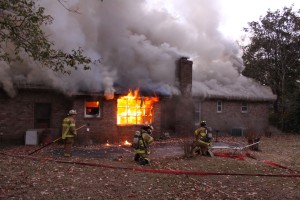NTSB wants FAA to impose stricter controls on medical helicopters. Training and safety equipment recommended.
 Click here and then scroll down for the latest fire and EMS news from STATter911.com
Click here and then scroll down for the latest fire and EMS news from STATter911.com
Watch report from 9NEWS NOW’s Bruce Leshan (or here)
The Washington Post’s series of articles Fatal Flights
The Washington Post’s video Trooper 2’s Last Flight
From the AP:
The National Transportation Safety Board on Tuesday urged the government to impose stricter controls on emergency helicopter operators, including requiring the use of autopilots, night-vision systems and flight data recorders in an industry that suffered a record number of fatalities last year.
The NTSB recommendations for training and safety equipment to the Federal Aviation Administration are in addition to others made in 2006, such as requiring installation of terrain awareness monitoring to help pilots navigate when weather conditions are poor.
The safety board, which cannot require such changes, also wants the Health and Human Services Department to require emergency helicopter operators to meet safety standards before receiving Medicare payments for medical flights. Board members agreed to ask HHS to create safety audits for emergency helicopter operators at their meeting Tuesday and asked NTSB staff to craft recommendations to send to HHS, which would have to adopt the changes in reimbursements.
The move to tie Medicare reimbursements to safety standards is a new approach by the NTSB, although the board has recommended linking improvements to accreditation for other industries in the past, NTSB Chairman Deborah Hersman said.
“We’ve seen that approach as a useful model in other industries,” she said.
The board’s action comes after last year’s record number of fatalities involving emergency medical helicopters. There were nine accidents between December 2007 and October 2008, killing 35 people. No fatalities were reported in the three accidents since then.
The spike in accidents follows extraordinary growth in the number of emergency medical helicopters operating throughout the country. The number of operators increased more than 80 percent over the past 10 years, with about 750 medical service helicopters offering service today.
Yet medical helicopters are permitted to operate without basic safety features that commercial flights must carry, such as black box recorders, collision-avoidance systems and radar altimeters.
NTSB board members said they believe changes in Medicare reimbursement rules in 2002 made it easier for helicopter operators to receive reimbursement for emergency medical flights. And those changes led to the large increase in providers.
NTSB board member Robert Sumwalt, who proposed linking Medicare reimbursement to new safety audits, said regulators have to take bold steps to improve standards and HHS officials can provide an incentive.
“I feel that we do have to push the envelope,” Sumwalt said.
The NTSB also recommended that HHS consider increasing reimbursement rates for those operators who qualify if the agency determines that it is justified to cover greater transport safety costs.
Hersman and others have argued that FAA hasn’t moved quickly enough on previous NTSB recommendations to toughen regulations on emergency helicopter operators. Besides the terrain awareness systems, NTSB in 2006 recommended adoption of formal flight risk assessments before EMS flights, and new EMS flight dispatch procedures that include up-to-date weather information and assistance in flight risk decisions.
FAA spokesman Les Dorr said Tuesday those recommendations and more approved Tuesday by the NTSB will be considered as FAA develops new rules for emergency helicopters. Those proposals are due early next year, Dorr said.




